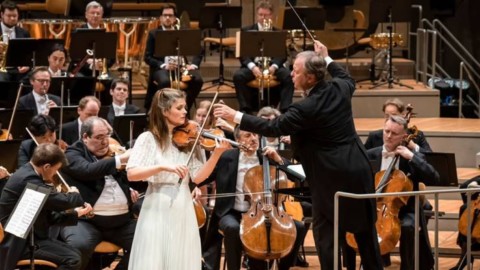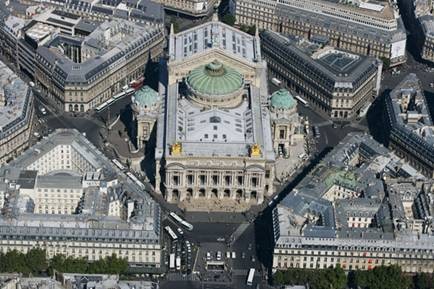Romantic Opera
VERSION FRANCAISE DISPONIBLE. VEUILLEZ CLIQUER SUR L'ICONE (BAS DE PAGE)
DEFINITION
In the 19th century, opera developed considerably. Paris became the capital of opera, where Italian composers, specialists in the genre, performed in particular. Grand opera was created there , with the contribution of Auber, Meyerbeer and especially Rossini, who would then achieve international fame.
Italian opera reached its peak with Bellini , Donizetti and especially Verdi , then Puccini , French opera with Berlioz , Bizet , Gounod , Massenet , as well as Offenbach in comic opera.
In addition to Italian and French romantic opera, the 19th century saw the development of German lyric drama with Weber , whose "Der Freichütz" is considered the first romantic opera, followed by Wagner who created the concept of total art. It also saw the emergence of operas of different national schools, such as the Russian school with Glinka and the Group of Five, and the Slavic national schools.
The 19th century was marked above all by the confrontation between its two greatest opera composers, Verdi and Wagner , each of whom had their admirers and fanatical detractors.covers a period of about 70 years, from 1750 to 1820, which follows the Baroque period and precedes Romanticism, to which it is often opposed. This period is dominated by what some call the "holy triad" of Viennese classicism: Haydn, Mozart and Beethoven.
Concerning musical forms, the classical period sees the triumph of the sonata form, which is found in the sonata itself but also in quartets, concertos and symphonies. These new musical genres will be used throughout the 19th century and again in the 20th century.
Italian opera, for its part, is questioned by Gluck, then by Mozart.
THE GRAND OPERA
Grand opera is a serious genre opera, generally in 5 acts, entirely sung, that is to say that it no longer contains spoken dialogues. These are replaced by recitatives , melodies recalling the inflections of speech, accompanied by the orchestra.
Grand opera also uses all possible spectacular effects such as large symphony orchestras, great virtuoso arias, large choirs, ballets, sumptuous sets.
It particularly concerns operas which were staged in Paris between 1820 and 1870.
The most representative early operas of the genre are "Guillaume Tell" (1829) by Rossini, "Robert le Diable" (1831) by Meyerbeer and "La Juive" (1835) by Halévy. They are followed by "Les Huguenots" (1836) and "Le prophète" (1849) by Meyerbeer, "La favorite" (1840) by Donizetti, "Les vêpres siciliennes" (1855) and "Don Carlos" (1867) by Verdi, "Les troyens" (1863) by Berlioz, "Hamlet" (1868) by Ambroise Thomas.
THE ITALIAN THEATRE

The Théâtre-italien or more simply "the Italians" refers to a troupe that performed between 1801 and 1878, successively in different Parisian venues. Their repertoire, initially Italian, quickly became that of the French grand opera. Rossini, who directed it from 1824 to 1830, created his "Voyage à Reims" there in 1825. "The Italians" also created great successes by Meyerbeer and Verdi, including "La Traviata" in 1856.
He is represented by Rossini, a bel canto specialist, followed by Bellini and Donizetti, then Verdi, the veristeists Leoncavallo and Mascagni, and Puccini.
THE VERISTS
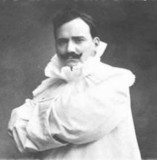
Verismo opera constitutes the musical side of the 19th century literary movement which reflects the real life of poor people, as in Zola, Balzac with La Comédie Humaine or Flaubert with Madame Bovary.
Verismo opera is essentially Italian, although in France we find works such as "Louise" by Gustave Charpentier which can be linked to it.
Verismo operas are generally short (1 or 2 acts) and very melodramatic: they contain long, tearful phrases often doubled by the strings, as well as heartbreaking cries that are intended to bring a tear to the listener's eye.
The most famous veristo composers are Pietro Mascagni and Ruggero Leoncavallo , but we also associate most of the post-Verdi Italian opera composers of the period 1890-1910, such as Alfredo Catalani (1854-1893), Alberto Franchetti (1860-1942), Francesco Cilea (1866-1950), Umberto Giordano (1867-1948), Franco Alfano (1876-1954).
Pietro Mascagni (1863-1945)
Mascagni is best known for his opera " Cavalleria rusticana " which was a real triumph when it was first performed in 1890 (60 encores for the composer and programmed in 96 theatres in the following months). The libretto deals with love, betrayal and honour in a Sicilian village.
Mascagni composed around fifteen other operas including “ L'Amico Fritz ”, “Guglielmo Ratcliff”, “ Iris ”, “ Il Piccolo Marat ” and “ Nerone ”, which did not enjoy the same success.
Ruggero Leoncavallo (1858-1919)
In 1892, the Milanese public gave a triumph to his opera " I Pagliacci " (Paillasse), which exploits the theme of the clown obliged to amuse the spectators when his heart is broken.
Leoncavallo composed about twenty other operas including " La Bohème " in 1897, shortly after Puccini's opera of the same name.
ROSSINI (1792-1868)

Gioachino Rossini marks the beginning of Italian romantic opera. He is at the origin of the 19th century bel canto, a vocal virtuosity that restored a privileged place to the voice in Italian opera, a style that would be adopted by his contemporaries Vincenzo Bellini and Gaetano Donizetti.
After having established himself in both comic opera such as "The Barber of Seville" and opera seria such as "Otello", he participated in the creation of the French Grand Opera with his last opera, "Guillaume Tell", in 1829.
At a very young age, Rossini learned the piano, the cello, singing and composition. At twenty, he had already written seven operas, but it was his opera "Tancred" in 1813, which triumphed in Venice and brought him consecration.
From 1815 to 1823, he wrote one or two operas per year, including "The Italian Girl in Algiers" (1813), "Elizabeth, Queen of England" (1815), "The Barber of Seville" (1816), "La Cenerentola" (1817), "Mose in Egitto" (1818) which became "Moses and Pharaoh" in 1827, and "Semiramis" (1823).
After a stint in Vienna, where he met Beethoven, then in London, he returned to Paris in 1824 where he became director of the Italian theatre , then Composer to the King and Inspector General of singing in France.
It was there that he composed his last opera in Italian, "Il viaggio à Reims" (The Journey to Reims), and subsequently only composed librettos in French, including "Le Comte Ory" in 1828, and his last lyrical creation "Guillaume Tell" in 1829, the prototype of the French Grand Opera .
From 1830 onwards, and until his death in 1868, he composed only a few religious works such as the "Stabat Mater" in 1841 and the "Petite messe solennelle" in 1864, as well as various vocal, piano and chamber music pieces collected under the title "sins of old age".
After staying in Italy from 1836 to 1853, he settled permanently in Paris where he devoted himself to gastronomy. He wrote a recipe book and had a creation dedicated to him by a chef, the tournedos Rossini .
Rossini, born on February 29 (1792 in Pesaro), died on Friday the 13th (November 1868 in Paris)
bELLINI (1801-1835°
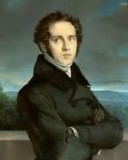
Continuing Rossini, Vincenzo Bellini purified the art of Bel Canto, simplifying the melodies and orchestration in order to better express the emotion.
Vincenzo Bellini was born on November 3, 1801 in Catania, Sicily.
He began composing at a very young age and continued his studies at the Royal Conservatory of Naples from 1819 to 1825.
In Milan, he met the librettist Felice Romani with whom he wrote several operas including " Il Pirata " which made him known in 1827, " La Straniera " (1829), " i Capuletti ei Montecchi " (1830) and above all his two masterpieces created in Milan in 1831: "La Somnambula" and "Norma" which is a pinnacle of Bel Canto.
After the failure of "Beatrice of Tende" in 1833, he broke with Romani, and, after a stay in London, settled in Paris, where, in January 1835, the Théâtre-Italien gave a performance of his last opera "i Puritani".
He died a few months later, on September 23, 1835. His short life only allowed him to compose about ten operas.
DONIZETTI (1797-1848)

Like Bellini, Donizetti inherited Rossini's Bel Canto, which he simplified and into which he introduced more popular melodies.
Gaetano Donizetti was born in Bergamo on November 29, 1797.
After being a pupil of Simon Mayr (himself an opera composer), he entered the Academy of Music in Bologna, where he composed mainly religious music, before devoting himself to opera. He then composed 31 operas in 14 years, from 1816 to 1830.
But it was the 32nd, "Anna Bolena", commissioned in 1830 by La Scala in Milan, that made him famous. Among his many other operas (he composed more than 70), his greatest successes at La Scala in Milan were "L'elisir d'amore" in 1832, then " Lucrece Borgia " in 1833, and " Marie Stuart " in 1835.
It was in Naples, in the same year 1835, that he created his most remarkable tragedy, "Lucia di Lamermoor".
In 1838 he moved to Paris where he succeeded Rossini, who had retired, and Bellini who had died three years earlier.
It was there that he composed " La fille du régiment " (1840), "La favorite" (1840) and "Don Pasquale" (1843), all 3 performed in French.
In 1843, he created his last work, “ Dom Sébastien ”, a grand opera in 5 acts.
Suffering from syphilis, he was interned in an asylum in 1846 and then brought back by his family to Bergamo where he died on April 8, 1848.
VERDI (1813-1901)

Giuseppe Verdi is the most famous and most performed composer in the history of opera.
His operas, filled with patriotic spirit, made him the champion of liberal ideas and Italian nationalism.
Giuseppe Verdi was born on October 10, 1813 near Busseto in Italy.
His first opera " Oberto " brought him success in 1839, but the death of his wife and second child caused him to sink into depression and give up writing, until reading the libretto of "Nabucco" convinced him to return to composition.
From 1842 to 1851 Verdi composed 14 operas, including " Nabucco " in 1842, " Ernani " in 1844, " Macbeth " in 1847, " Luisa Miller " in 1849.
The slave chorus ("Va pensiero") from Nabucco would later be called, and still remains today, the second Italian national anthem. To be convinced, just watch this video, taken from a performance of Nabucco in Rome in 2011:
This "2nd Italian national anthem" performed and commented by Riccardo Muti, encored by an enthusiastic audience, expresses all the fervor of the Italians for their great man that is Verdi.
This sequence is not a concert version but is actually taken from a performance of Nabucco in Rome in 2011.
In 1847 Verdi met the singer Giuseppina Strepponi, whom he married in 1859 after 12 years of concubinage and with whom he lived until her death in 1897.
The year 1851 marked a turning point in his compositions with the trilogy " Rigoletto " (based on "Le roi s'amuse" by Victor Hugo) (1851), " Le Trouvère " and " La Traviatta " (1853) which are among his major works.
These operas were followed by “ Les vêpres siciliennes ” created in Paris in 1855, “ Un ballo in maschera ” (A masked ball) created in Rome in 1859, “ La forza del destino ” (The Force of Destiny) created in Saint Petersburg in 1862.
At the same time, he entered politics, becoming a deputy in the parliament of Parma and Modena in 1859, then a deputy in the first Italian parliament in 1861.
Verdi's name became the symbol of a free and unified Italy: the words "Viva VERDI" that were found written on the walls actually meant "viva Vittorio Emanuele Re D'Italia".
Verdi's art comes close to grand opera with " Don Carlos " created in Paris in 1867, then " Aida " in 1871. This last opera was commissioned by the Khedive (viceroy of Egypt) to celebrate the opening of the Suez Canal. Listen: Les « trompettes d’Aïda »
After these successes, Verdi retired to his farm to lead the life of a gentleman farmer, but he returned to composition by teaming up with the librettist Arigo Boito with the revival of " Simon Boccanegra " in 1881 (the first version of which had been composed in 1857), and his last two masterpieces: " Otello " in 1887 and " Falstaff " in 1893.
Verdi also composed religious music including the Requiem (1874) in memory of his friend the poet Manzoni.
At the end of his life, Verdi founded a retirement home for musicians in Milan.
He died on January 27, 1901 in Milan.
At his funeral, which he had wanted without music, the crowd began to sing the chorus of Nabucco's slaves to pay homage to him.
Verdi's most beautiful operas and arias : Nabucco, Macbeth, Rigoletto, The Troubadour, La Traviata, The force of destiny, Aida, Otello, Falstaff.
PUCCINI (1858-1924)
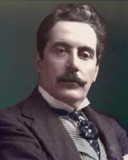
Giacomo Puccini is sometimes associated with verismo , in particular with "Manon Lescaut" (1893), "La Bohème" (1896), "Tosca" (1900) or "Madame Butterfly" (1904), but his style moves away from it by the romanticism and modernism that he brings to it. Over the course of his works, he comes somewhat closer to Debussy and Wagner by developing the continuous melody to the detriment of separate airs, and by giving the orchestra an essential role.
Puccini was born in Lucca on December 22, 1858. At a very young age, he studied music with his organist father and his uncle, in the family tradition. Around the age of fifteen, he enrolled at the Lucca Music Institute and began to compose. It was a performance of Verdi's "Aida" in 1876 that revealed his vocation as an opera composer. He entered the Milan Conservatory in 1880 and was taught by an opera composer: Amilcare Ponchielli. During a writing competition in 1882, he composed his first opera " Le Villi " which did not win the prize but which would achieve real success with the public when it was performed in Milan in 1884.
In 1884 he seduced and abducted the wife of a friend, Elvira Gemignani, with whom he had a son and whom he married in 1904.
His second opera, " Edgar ", created in 1889, was not a success.
In 1893, he composed " Manon Lescaut " which was his first international success and which led to him being considered the heir to Verdi. For this opera, Puccini enlisted the help of librettist Luigi Illica, who would later join forces with Giuseppe Giacosa to write the libretti for his next 3 operas, including " La Bohème " in 1896. La Bohème is the story of a young man (Rodolfo) and a young girl (Mimi) who meet, fall in love, are then separated by life and finally meet again before the ultimate separation.
For " Tosca ", composed in 1900, Puccini and his librettists had to unscrupulously persuade Alberto Franchetti to give up the rights he had purchased from the author of the original play, Victorien Sardou.
In 1907, Puccini composed " Madame Butterfly ", where East and West meet through the betrayed loves of the young geisha Cio-Cio-San, known as Madame Butterfly, who falls in love with an American naval officer.
This taste for the exotic can be found in " La fanciulla del West " (The Bride of the West) in 1910 and in " Turandot ", his last opera.
This last opera, unfinished, was completed by Franco Alfano and premiered in 1926, 2 years after Puccini's death. (Luciano Berio wrote another finale for this opera in 2001).
After "The Bride of the West" and before "Turandot", Puccini wrote in 1917 an operetta which he then transformed into an opera, " La Rondine ", then in 1918 a triptych (Il trittico) composed of 3 short operas in one act: "Il Tabarro" (La Houppelande), "Suor Angelica" and "Gianni Schicchi" .
Puccini died in Brussels in 1924 from throat cancer.



